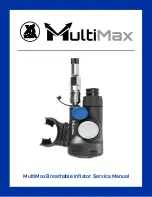
BARTINGTON INSTRUMENTS
Page 25 of 82 OM0408/49
6.5. Preparation of Samples
Natural samples will never occur in such a form that the textbook value will be obtained. For
example, the material of interest may be involved in a matrix of organic material of no interest,
or be suspended in water. The true density of the analytic fraction is seldom known. Therefore,
no strict instructions can be given for every situation. Each situation must be judged on its own
merits and an appropriate sample collection and preparation regime planned. However, the
following general points must be observed.
1. For most surveys, precise inter-sample comparability is of more interest than absolute
values. This can only be assured where more importance is attached to consistency of the
method of sample collection than to rigorous laboratory after-treatment.
2. Samples can safely be dried in air at temperatures up to 40
o
C to reduce the mass
contribution of water.
3. The sensor is calibrated to a secondary standard derived from a primary standard of 10cc
H
2
O. The standard applies for a sample shape defined by the 10cc sample pot. Some variation
in accuracy will result when other sample volumes are employed: see Table 2.
Note:
It is particularly important that sample containers are accurately filled or calibration
will be impaired.
Table 2. Volume correction factors in sample preparation.
Description
Volume ml (cc)
Volume correction
factor. Multiply
κ
by:
Accuracy
10 ml cylindrical
bottle
10
1.0
1%
20 ml cylindrical
bottle
20
0.5
2%
1’ length x 1’ dia.
core
13.27
0.81
1%
23mm cubic sample
7.18
1.4
2%
1’ cube
13.16
0.82
1.5%
When using an unusual size of sample pot, see
Centring
for guidance on centring.
6.6. Sample Holder Effects
Note:
Only sample containers constructed in electrically insulating materials should be
used with this sensor.
















































